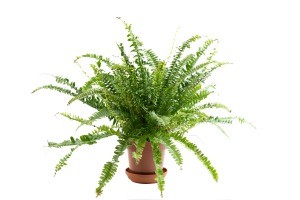
Ask a QuestionHere are the questions asked by community members. Read on to see the answers provided by the ThriftyFun community or ask a new question.
I rescued a fern a few years ago. This year it has sort of skeletal branches with tiny white blobs along the stalks instead of leaves. Is this seed?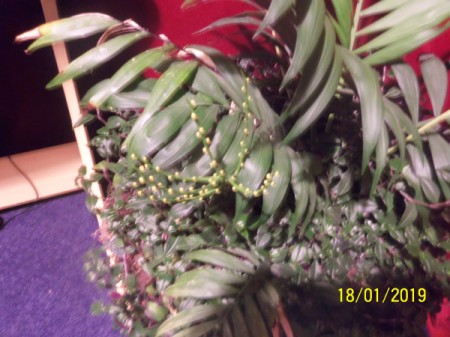
Hello ! It is not a fern, it is a palm tree, actually a dwarf palm tree
called Neanthe Bella,or parlor palm and by its scientific name: Chamaedorea elegans. The white spots are in fact slightly yellow and they are its flowers which sometimes (rarely) turn into tiny fruits.
I am trying to transplant roadside wild ferns in my landscape as decorative plants. They come from the side of the road and poor soil, but close to dampness.
What can I do to ensure they will take off? I have got some in the ground already, but they are starting to look withered. They are very fragile in transportation, as well.
By Ron
Ron, Hang in there with them. In my experience, I've had good luck with ferns. They may look bad at first and you may lose some. On others the main fern leaves may die but you will probably see new shoots coming out from the base. Curly new babies that will take over and grow into new plants. Be picky on where you plant them though. Once you get some going, they spread like crazy! Try planting a little deeper when transplanting them and don't forget to water. Good luck!
I would like to bring my fern inside for the winter, but I don't want to bring any insects inside with it. Should I spray my fern with some solution to get rid of the insects before bringing the fern inside?
By Barb B
If the fern is in the ground, leave it where it is because it's acclimatised and will be fine-it may look dead with winter but will perk right up in the spring.
If it's in a container, first give the soil a good soak with the garden hose and while you're doing that, spray the undersides of the fronds by tilting the hose nozzle up from underneath the fronds to blast (but gently) the critters out. I say gently because you don't want to blast off the spores on the undersides of the fronds-that's your foliage for next year and if you knock them all off you will shorten your ferns life.
If you see any critters escaping the unwanted bath, you could then follow up by using a drop of a very mild soap and water mixed to spray the soil and the fronds (including from underneath to avoid giving 'hitchhikers' a place to hide). You can find the size spray bottle I'm talking about at the dollar stores, etc.
Let the pot drain completely before moving it inside, and think about getting help if it's a large pot:)
I'm including a link with answers to lots of fern questions by a horticulturalist:
How does Epsom salt work on ferns?
Hardiness Zone: 5a
By everett
It makes it turn greener & pretty, I use it on all my flowers & tomatoes, mix 2 tablespoons to a gall of water, give the plants a 1/2 cup every other day, good luck.
Are the red berries on an asparagus fern seeds? Can I plant them?
Hardiness Zone:
By Sis from AL
Asparagus plants can be grown from seeds or seedlings, which are small plants that have been started from seeds in a controlled environment. If started from seeds it will be 3 years before the plant can be harvested for the spears, or 2 years if started from year-old seedlings or roots. The asparagus vegetable plant needs a dormancy period in the winter, in order to grow and produce the spears.
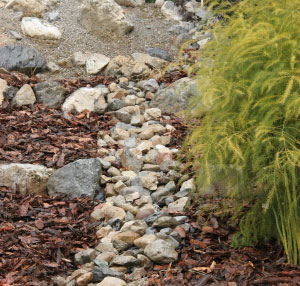
Hardiness Zone: 6a
Marilyn from Indian Orchard, MA
To stimulate new growth, try placing plants in bright (not direct) sunlight. Water them regularly from spring until fall (sparingly in winter). If it has been a while since yours has been repotted, you may also want to move it to a new pot with some fresh soil. As we get closer to spring, start feeding a water-soluble organic liquid fertilizer once a month. Watch for leaves starting to yellow. This is usually a sign that either your fern is getting too much light, or too much water.
Good luck!
Ellen
I am not certain if this tip works with asparagus ferns but who knows. Male and female. I had a spider plant that never grew babies. One of my friends said that the plant may be male. (yeah right!) What I was told to do was to get a baby from someone elses plant and plant it in the same pot as my own spider. Within a very short time, my plant sprouted so many babies.
It needs to be in a small pot. They do better if they are a little pot-bound.
Mine literally grow like weeds. They like to be neglected!
Has anyone planted a Boston fern, after they have spent the summer on your porch in the ground and had them to come up the next year?
Hardiness Zone: 6a
I live in a much warmer climate than yours and I've never gotten any kind of houseplant to winter over. I think your winters are just too harsh.
I googled "Boston Fern" and apparently it's only hardy on zones 9-10. If you're sure it's a Boston fern and not a Christmas fern (they look similar), I'd keep it indoors. If it were a Christmas fern, you could put it out. Those are very hardy.
These were sold at the Kroger store as Boston Ferns at the start of summer, so I have to take their word for it, as to what it is. Thanks for the feedback. I also googled and it looks as if I will try to find a place for it in my house this winter.
I used to live in the mountains of NH (zone 4) and there were a lot of ferns along the front of the house. (Before I moved there). I'm not sure exactly what kind of ferns they were but they did very well. And on the north side of the house. So I know some ferns are hardy. Find out for sure what kind of fern you have and then check if they are OK for your zone. Many plants are not as delicate as we think. It's not uncommon for the temp. to go down to 25*below zero in NH.
Share on ThriftyFunCheck out these photos. Click at right to share your own photo in this page.
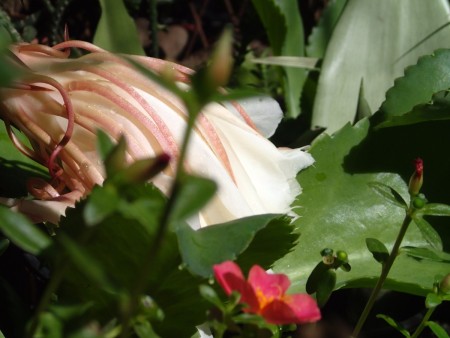
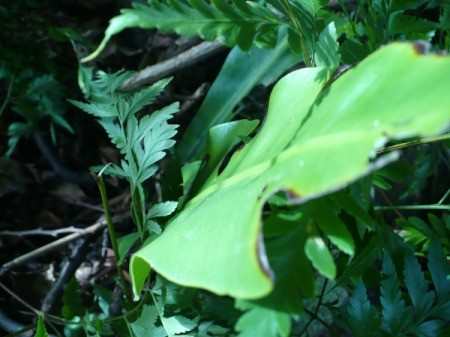
Photo Description We decided to take a few of the plants home and plant them in our gardens. I chose a fern plant from the Elaphoglossum family and planted it in a large pot in my garden. The fern has been growing for several years. However, in January the plant seemingly started to produce flowers. I had no idea that this fern plant had flowers. I later found out that the plant only blooms once a year. The flowers open at night and only last for 2 to 3 days. In the early morning hours the flower closes. I took this picture early one morning when the flower was starting to close. In the 7 years that the fern has been growing in my yard, I have only seen 4 flowers. When I first saw the flower it was amazing. The petals are delicate and will wilt if touched. I feel so lucky to have gotten a picture of this flower. I think it is an amazing flower and I've never seen one like it before. Although I originally thought that the fern itself was actually blooming, I have done further research and now know that, in fact, the flower is actually that of a an epiphytic cactus (Epiphyllum genus, I believe), commonly known as Queen of the Night. These cacti are frequently found growing in trees, which are used as support, tucking their roots into pockets of decaying vegetable matter. They are also sometimes found growing in rocky ground, their roots reaching into the rocky crevices. In the tropics they enjoy the warmth, high humidity, and the shade that protects them from the full sun. This habitat is also home to orchids, bromeliads, ferns, and mosses. The ones here in Tahiti have long thin stems that can grow up out of the ferns, hence my confusion. These stems can reach 4 feet long and may support 2 or 3 flowers.
Several years ago a group of friends and I went on a nature walk up the river bed that runs in front of my home. We followed the river to the base of the mountain. There we discovered different varieties of ferns and other tropical plants growing wild.
Photo Location
Paea, French Polynesia Tahiti
Staghorn ferns are epiphytes. They are native to the tropical forests of southeast Asia and Australia. They are essentially an air plant and can be mounted to a plaque and hung on the wall of your home. This is a page about mounting and hanging a staghorn fern.
Starting your own ferns for a shady spot can be a challenge. This page is about growing woodland ferns from spores.
This is a page about re-potting ferns and trailing house plants. When potting or re-potting ferns or trailing houseplants a few simple steps can protect their foliage.